Travelogues
-
-
-
[Jeonju, In-Yeon Guesthouse] The Food, Beauty, and Culture of Traditional Korea
-
12/17/2018
231
-
-
-
-
-

Korea Travel Qrator
Atembe Giles
: United States


Korea Travel Qrator
Atembe Giles
: United States
Jeonju:
The Food, Beauty, and Culture of Traditional KoreaOctober 7-8, 2018
#KoreaTourism #ImagineYourKorea #Jeonju #VisitJeonju #KoreaTravel #VisitKorea #DiscoverSouthKorea #TravelInKorea #JeonjuHanokVillage #Inyeon #JeonjuTour
* Korea Travel Qrator : A travel expert who explores Korea Quality-certified facilities and conveys the feeling of travel through vivid experience contents.
Jeonju Hanok Village, Jeonju Kimchi Cultural Center
viewJaman Mural Village
viewTraveler's
Roomview01Jeonju Hanok Village, Jeonju Kimchi Cultural Center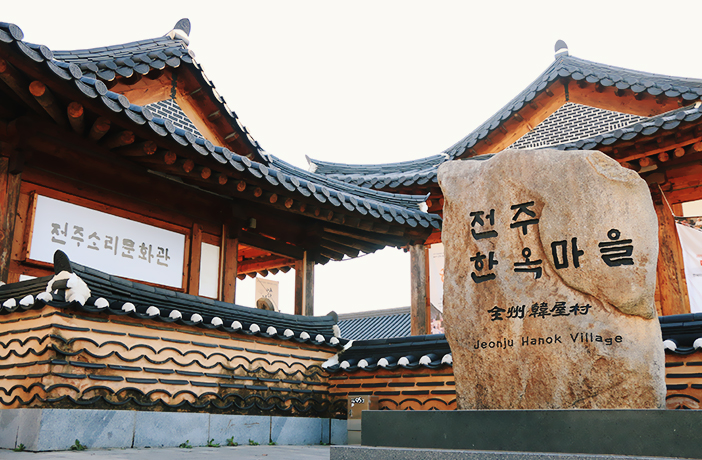
The central square of Jeonju’s Hanok Village
South Korea is known as a technologically advanced, modern country, with skyscrapers and a fast-paced lifestyle in most cities. However, there is one region that offers an authentic, enriching, traditional experience unlike any other in Korea. That area is Jeonju, a medium-sized city in the southwest province of Jeollabuk-do. Known for its traditional hanok village, cultural arts centers, and its reigning title as the Bibimbap Capital of Korea, there is something for everyone to enjoy in Jeonju while simultaneously learning about the rich history of Korea.
History and culture buffs will enjoy Jeonju’s Hanok Village. Hanok means this neighborhood is in the traditional Korean style, with carefully carved architecture, cobblestone streets, and the signature giwa-style rooftops with layered, curved tiles.
Places like the Hanok Village History Museum, Gyeonggijeon Shrine, and Jeonju Hyanggyo (Confucian School) give tourists a dynamic overview of Korea’s long, interesting history. Just try not to be too noisy after sunset—many people still call this traditional neighborhood their home, so be mindful of your noise levels in the evening.
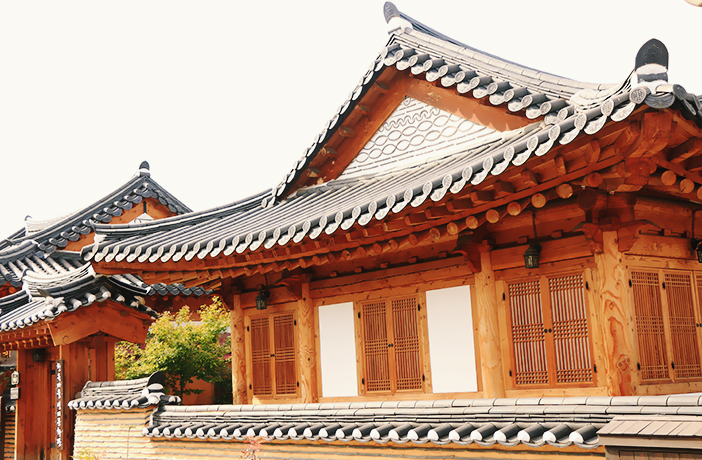
Jeonju’s traditional architecture is enchanting
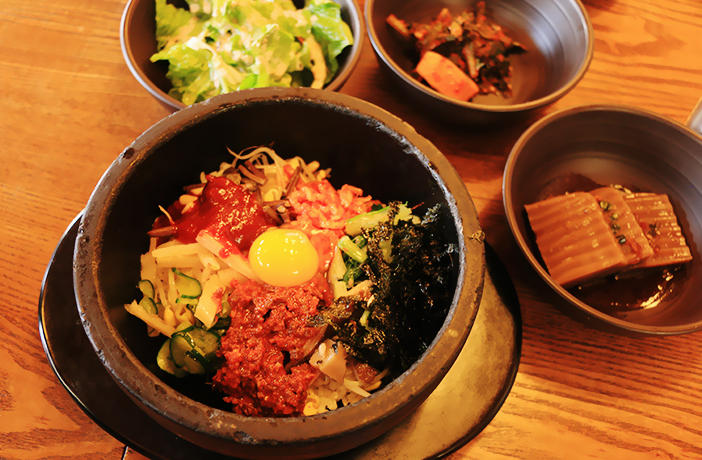
Eating a bowl of tasty bibimbap in the Bibimbap Capital of Korea is a MUST!
Are you a big foodie? Then Jeonju is the perfect place to satisfy your appetite! It’s called the Bibimbap Capital for a good reason: not only is Jeonju the birthplace of this famous rice and vegetable dish, but it also boasts some of the most delicious and famous bibimbap restaurants in Korea, which can be found in almost every neighborhood.
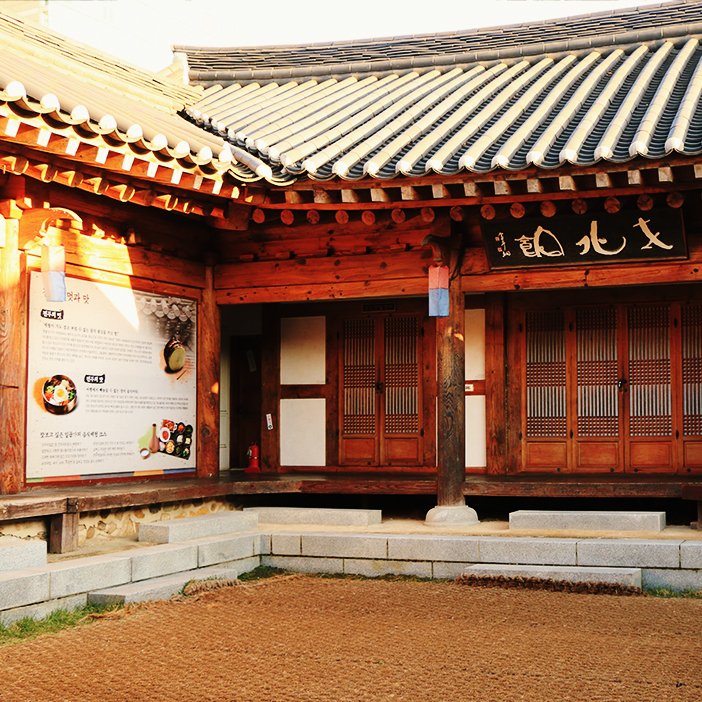
Inside Jeonju’s Kimchi Cultural Center
Jeonju is also known for its smooth-tasting rice wine, called makgeolli, and Korean pancakes, called jeon. For more insight about the food of Korea, visit the Jeonju Kimchi Cultural Center and the Jeonju Traditional Wine Museum on weekdays to learn how these dishes became synonymous with Korean cuisine. You can even take a class a learn how to make these yourself!
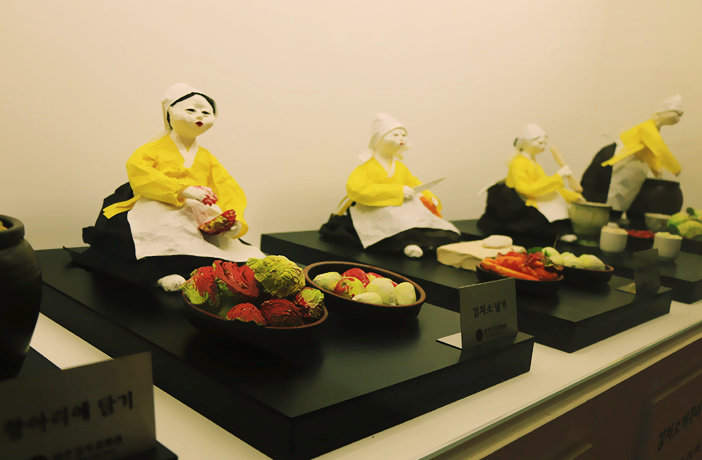
Learn the history of kimchi and even make your own at Jeonju’s Kimchi Cultural Center
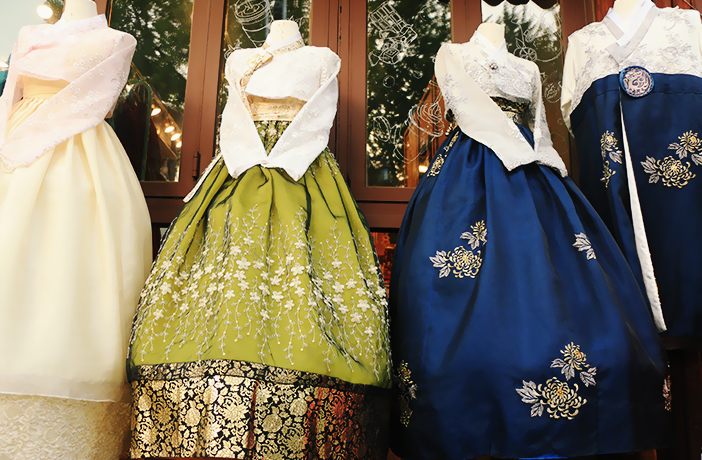
Spending a day in exquisitely-sewn hanbok can add an extra special touch to your Jeonju experience
Lovers of the arts will immediately be attracted to the beautiful scenery and architecture in Jeonju. Fashion lovers can get transported back in time by exploring the city in intricately designed hanbok, the traditional attire of Korea. Many hotels will give you discounts on hanbok rental, and many tourist sites will discount their admission costs if you arrive in hanbok, so don’t be afraid to dress up!
02Jaman Mural Village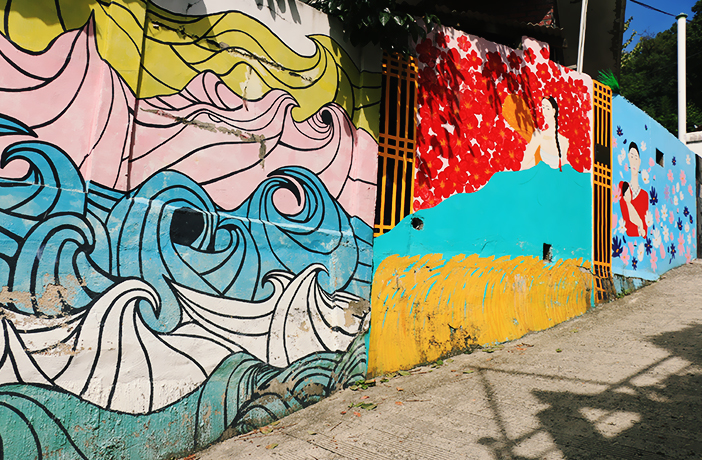
The colorful walls of Jaman Mural Village are covered in vibrant, fun art.
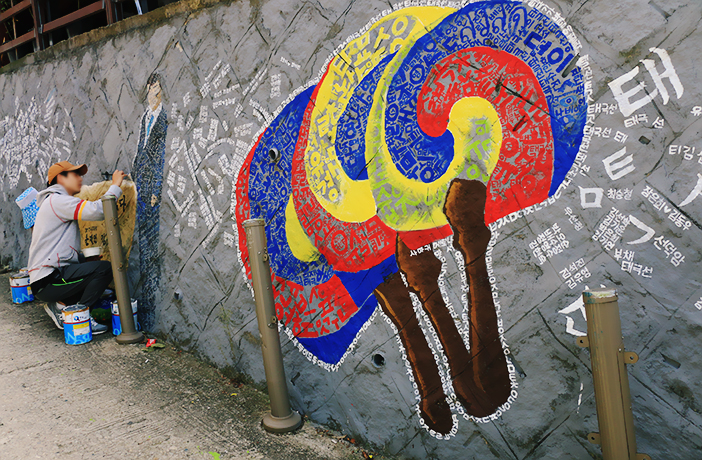
An artist adds his creative vision to the walls of Jaman Mural Village.
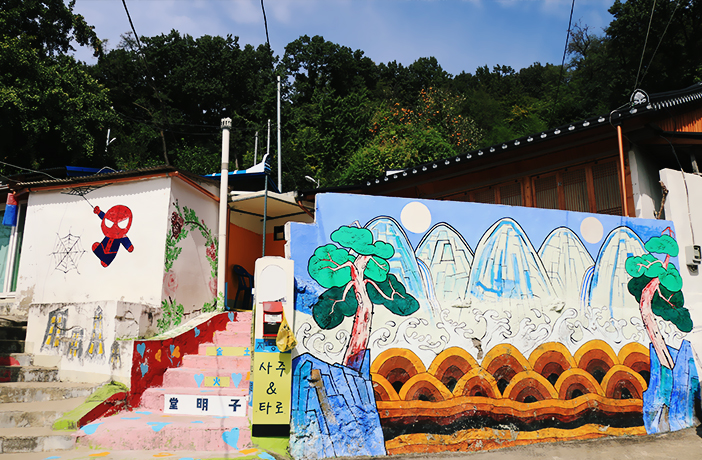
The view in Jaman Mural Village.
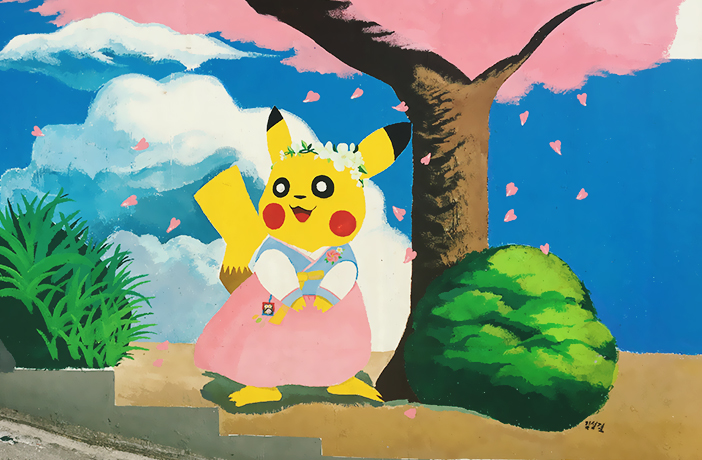
You just may spot some of your favorite characters making an appearance in the Jaman Mural Village!
Artists can immerse themselves in the art of Jeonju by visiting the Jaman Mural Village, a neighborhood where every wall is covered with colorful, vibrant, Instagram-worthy murals. You may even get lucky and see one of the artists in action!
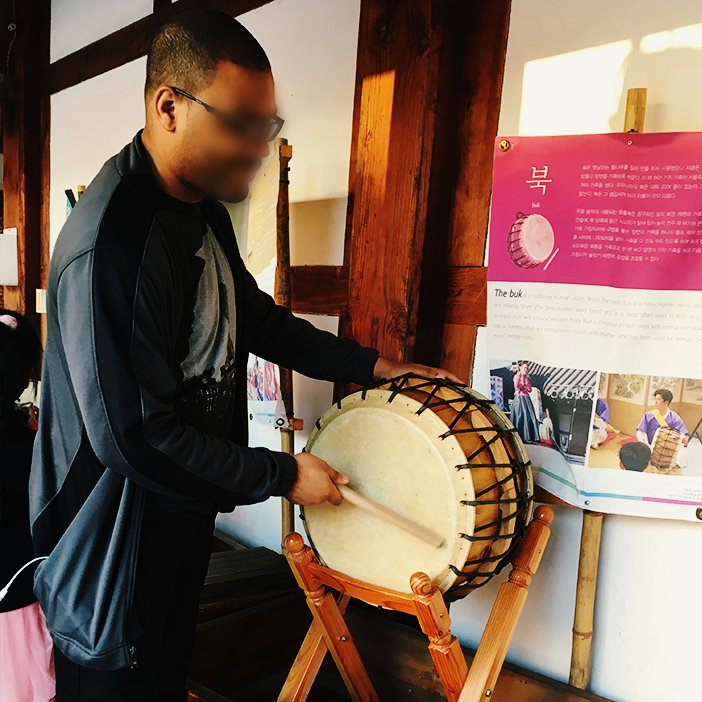
the Sori Arts Center in the Hanok Village
Lastly, music and theatre enthusiasts can enjoy traditional performances at the Jeollabuk-do Arts Center and the Hanok Village, where they can play on traditional Korean drums at the Sori Arts Center.
Finally, nature lovers and adventurists can soak up all of the fresh air and sunshine by renting a bike and cruising along the Jeonjucheon Stream. View the ancient temples nearby and explore Wansan Park before heading over to the bustling Nambu Market nearby.Jeonju may not be the largest city in Korea, but it definitely offers the largest amount of fulfillment for anyone who wants to experience the true beauty and culture of traditional Korea.
To get to Jeonju from Seoul, take an express bus from Seoul’s Express Bus Terminal (Honam Line) to Jeonju. You can book tickets ahead of time via https://www.kobus.co.kr (available in English, Chinese, and Japanese). The trip is about 2 hours and 40 minutes, including a 15-minute break at a rest stop. Tickets cost 12,800 won for economy seats; 18,700 for premium seats.
03Traveler's Room :
In-Yeon Hanok Guesthouse offers guests a peaceful, beautiful experience in a traditional village setting in Jeonju, South Korea.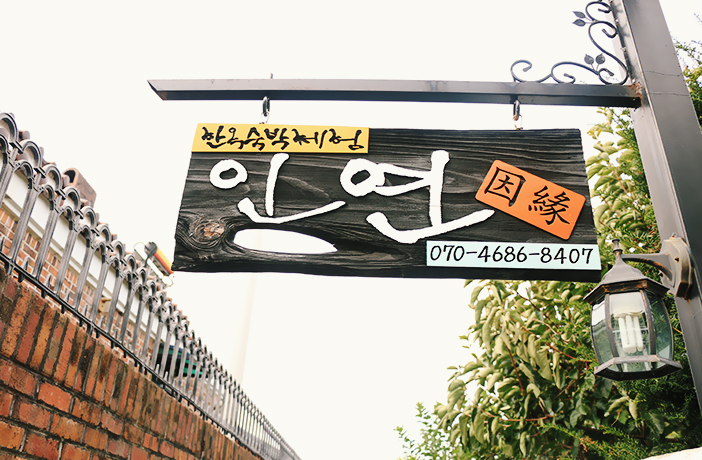
Entrance sign at the guesthouse
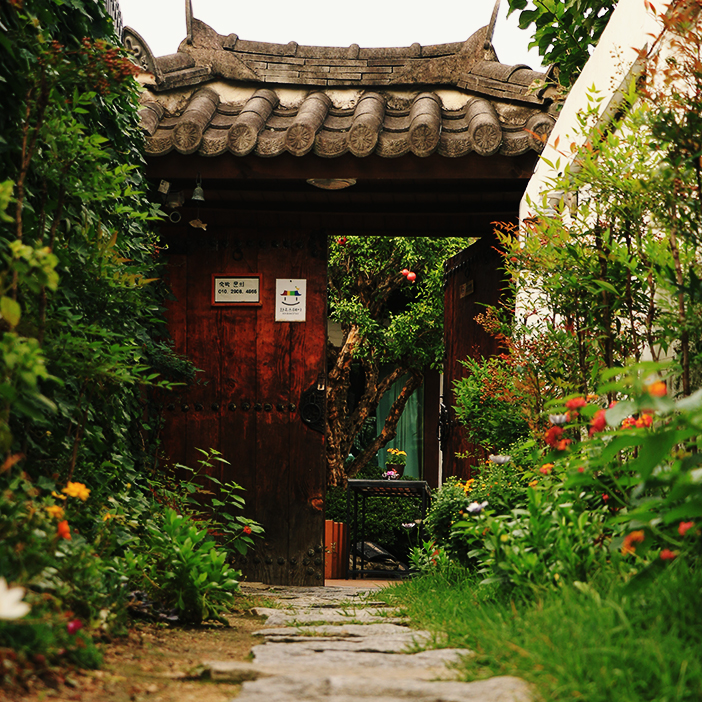
The entrance to the guesthouse
As soon as guests enter the gate of In-Yeon Hanok Guesthouse, they’ll be greeted by a lush, green garden and the smiling faces of the helpful couple that owns the guesthouse. The guesthouse is hanok style, which means it is in the style of a traditional Korean home.
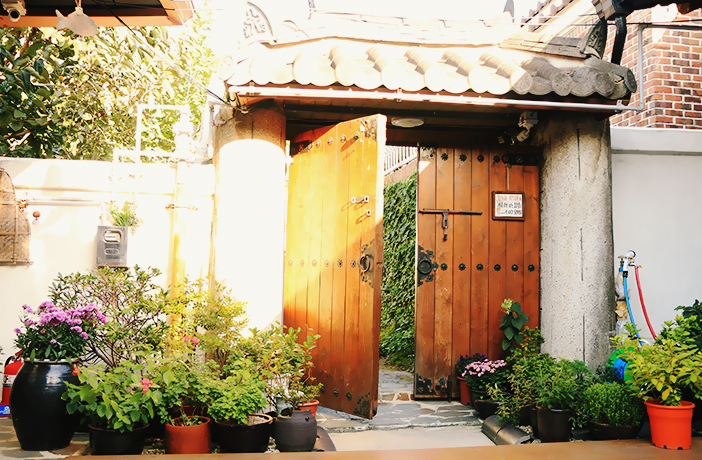
View of the door from inside the guesthouse
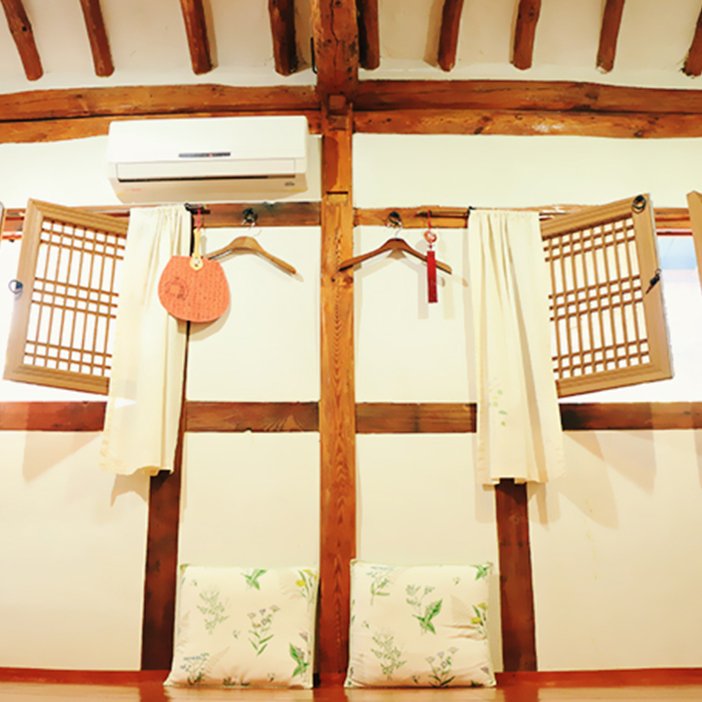
Inside the Orchid guest room, window view
The roofs are carved in the signature giwa style with curved, layered tiles. Inside, guests can experience ondol, which is the traditional way of heating the room through the floor. Despite the traditional appearance and experience, In-Yeon offers many modern amenities, such as a spacious, updated bathroom; cable TV; air conditioning; and free Wi-Fi.
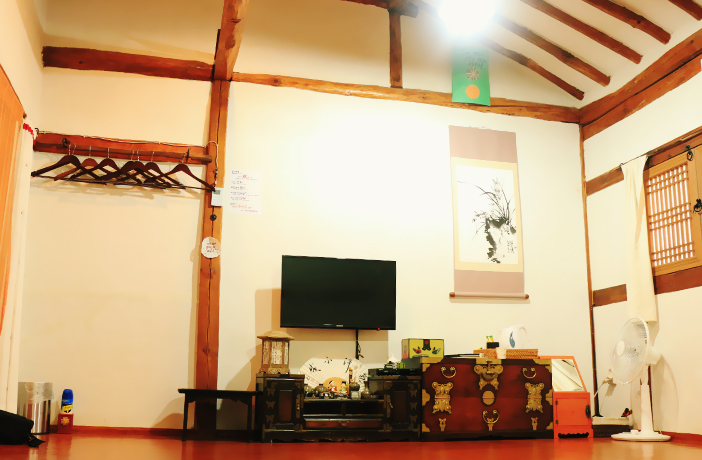
Inside the Orchid Room, TV view
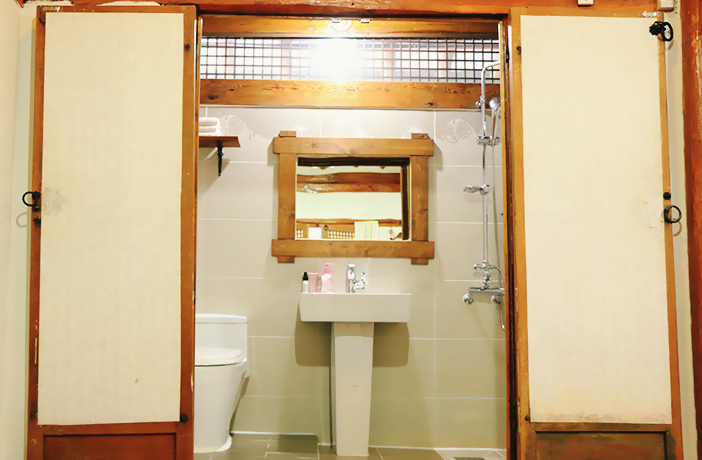
Bathroom in the Orchid Room
Upon check-in, enjoy a refreshing, complimentary cup of iced herbal tea in the flower garden while the hostess offers tips, maps, and even discounts to the many attractions nearby. Grab your camera and explore the rest of the neighborhood (which is a hanok village) on foot—no need for public transportation, as everything is within walking distance! There are museums and activities for everyone, from a kimchi museum to a traditional music center to wearing hanbok, the traditional attire of Korea. Taste some of Jeonju’s world-famous bibimbap before heading back to the cozy, quiet guesthouse for a relaxing night’s sleep. Get your beauty sleep on the comfortable traditional bed mats, where you can enjoy the warm ondol. If you didn’t finish exploring, don’t worry—the owners will gladly hold your bags for the day until you return.
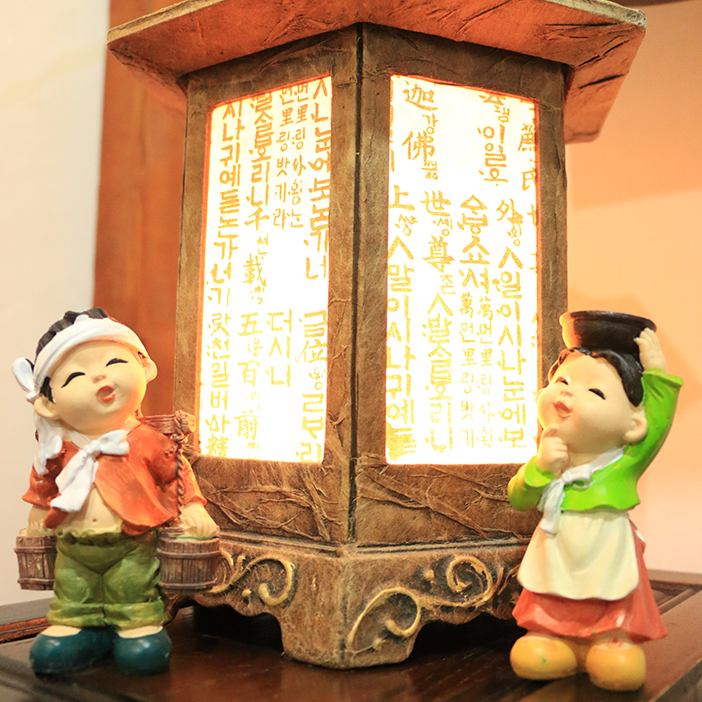
Room lamp
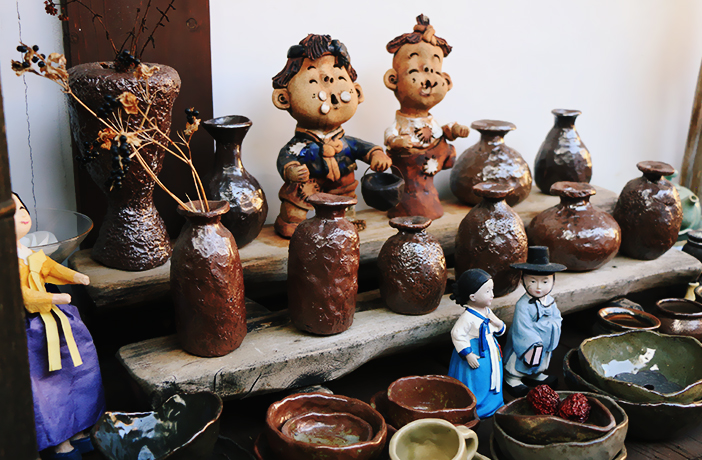
Traditional figurines in the garden area
If you arrive at the Express Bus Terminal or Inter-city Bus Terminal, a cab to the guesthouse will take less than 10 minutes and cost less than 5,000 won; however, cabs usually cannot enter the village, so you will need to walk one or two short blocks to the guesthouse from the main road.
Hotel InformationHotel Information - Hotel name, Website, Address, Price, Tel, Check in/out Hotel name In-Yeon Hanok Guesthouse Website http://www.xn--bh3b13i1wdz7bp9ad17b.kr/main Address 30-4 Pungnam-dong 2-ga, Wansan-gu, Jeonju, South Korea Price 70,000 – 100,000 won (depending on the room type and season) Tel (+82) 10-2908-4965 or (+82) 70-4686-8407 Check in/out 3 PM / 10:30 AM Korea Travel Qrator's TipThere are 5 rooms in this guesthouse: the Plum Room; the Orchid Room; the Chrysanthemum Room; the Wind Room; and the Bamboo Room. The smallest and cheapest room is the Wind Room; the next size and price up is the Plum Room and the Chrysanthemum Room; lastly, the Orchid Room and the Bamboo Room are the largest and most expensive rooms. The photos on the Korean website provide more details than the photos on Agoda.com.
1. This column was last updated in October 2018, and therefore information may differ from what is presented here. We advise you to check details before visiting.
2. This travelogue is written by Atembe Giles all contents are opinions based on my own experiences.






